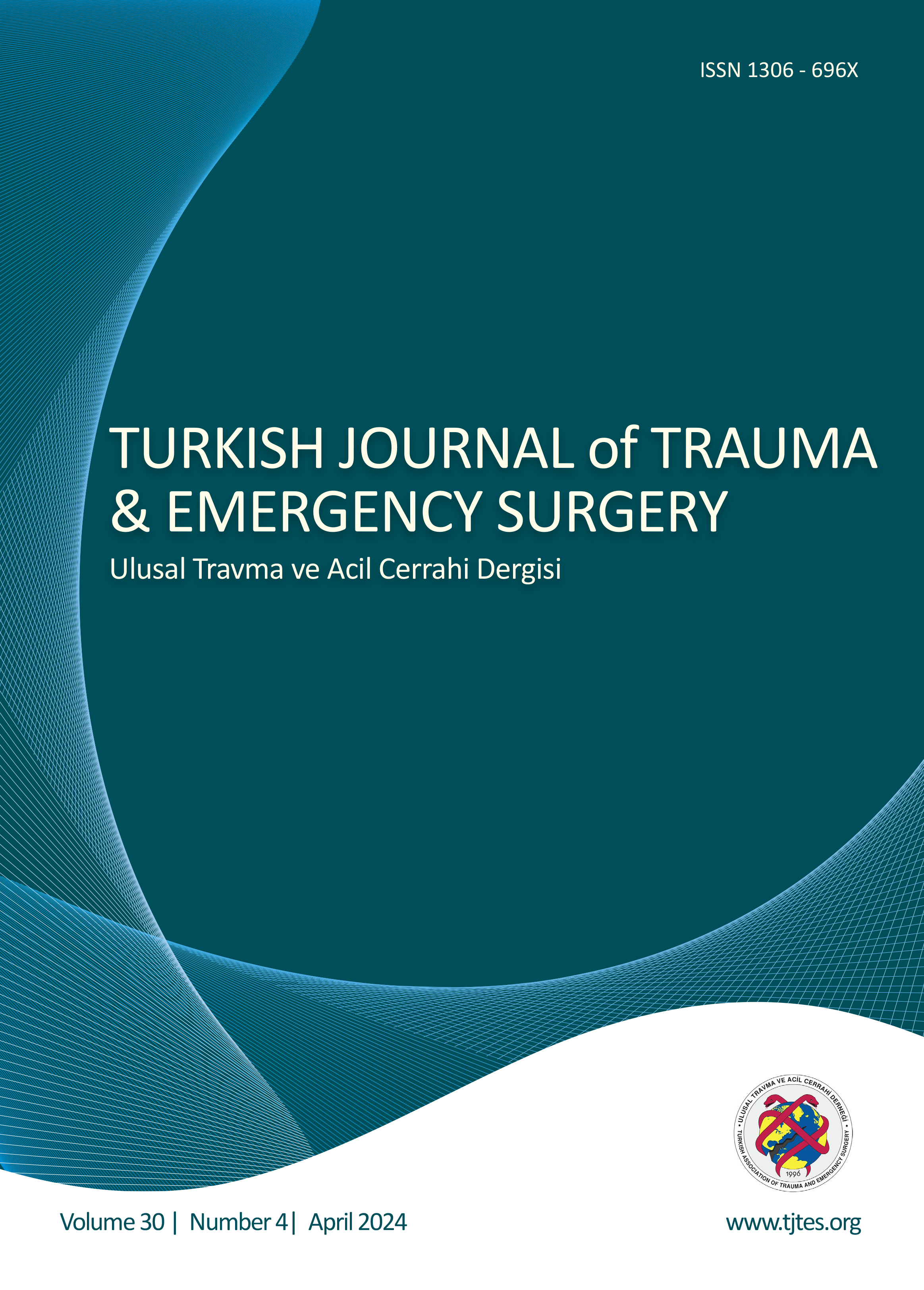Quick Search
Comparison of the newly developed Fourniers gangrene mortality prediction model with existing models
Bülent Çomçalı1, Cengiz Ceylan2, Buket Altun Özdemir1, İbrahim Ağaçkıran1, Felat Akıncı11Ankara Numune Training and Research Hospital, Department of General Surgery, Ankara-Turkey2Department of General Surgery, Bingöl State Hospital, General Surgery, Bingöl-Turkey
BACKGROUND: Many predictive factors and scoring systems associated with Fourniers gangrene have been proposed, including comorbidities, vital signs, biochemical and hematological parameters, and demographic characteristics of the patient. The aim of this study was to determine the strengths of the scoring systems that have been formed by revealing these factors from a wider perspective and in a larger patient population.
METHODS: The patient population included 144 patients, 21 of whom died. Age, biochemical and hematological parameters, Uludag Fourniers Gangrene Severity Index (UFGSI), Fourniers Gangrene Severity Index (FGSI), and Age-Adjusted Charlson Comorbidity Index (ACCI) scores were analyzed using the Mann Whitney U-test due to their non-parametric distribution. Categorical data such as comorbidities, gender, need for positive inotropes, diversion ostomy status, and UFGSI grading status was analyzed with the Chi-square test, and independent risk factors were determined from the significant data emerging from univariate and multivariate logistic regression analysis. Their strengths were compared using the logistic regression model (Fourniers Gangrene Mortality Prediction Model: FGMPM) created through ROC analysis of the FGSI, UFGSI, and ACCI scores.
RESULTS: The results of the statistical analyses showed that albumin (p<0.001) and need for positive inotropic support (p<0.001) were independent risk factors for mortality and ROC analysis revealed that the created FGMPM regression model (AUC: 0.995) was a stronger model than the FGSI (AUC: 0.874), UFGSI (0.893), and ACCI (0.788) scoring systems.
CONCLUSION: The results of this study revealed that albumin and the need for positive inotropic support are independent risk factors for mortality. It is thought that the determination of these two parameters can be used to predict mortality more practically than the parameters used in the UFGSI and FGSI.
Fournier gangreni için mortalite tahmin modeli (FGMPM) ve mevcut modellerle karşılaştırması
Bülent Çomçalı1, Cengiz Ceylan2, Buket Altun Özdemir1, İbrahim Ağaçkıran1, Felat Akıncı11Ankara Numune Eğitim ve Araştırma Hastanesi, Genel Cerrahi Kliniği, Ankara2Bingöl Devlet Hastanesi, Genel Cerrahi Kliniği, Bingöl
AMAÇ: Fournier gangreniyle ilişkili birçok prediktif faktör ve puanlama sistemi öne sürülmüştür. Bu sistemler, hastaların ek hastalıkları, vital bulguları, biyokimyasal ve hematolojik parametreleri ve demografik özelliklerini ele almıştır. Bu çalışma, bu faktörleri daha bütüncül bir bakış açısıyla ve daha geniş bir hasta popülasyonunda değerlendirerek oluşturulan puanlama sistemlerinin güçlü yönlerini ve eksikliklerini belirlemeyi amaçlamaktadır. GEREÇ VE YÖNTEM: Hasta popülasyonu 21i ölen 144 hastadan oluşmaktadır. Yaş, biyokimyasal ve hematolojik parametreler, Uludağ Fourniers Gangrene Severity Index (UFGSI), Fourniers Gangrene Severity Index (FGSI) ve Age-Adjusted Charlson Comorbidity Index (ACCI) skorları parametrik olmayan dağılımları nedeniyle Mann-Whitney U testi ile analiz edildi. Hastaların komorbiditeleri, cinsiyet, inotrop ihtiyacı, diversiyon ostomi durumu ve UFGSI derecelendirme durumu gibi kategorik veriler ki-kare testi ile analiz edilmiş ve tek değişkenli ve çok değişkenli lojistik regresyon analizi ile anlamlı verilerden bağımsız risk faktörleri belirlenmiştir. FGSI, UFGSI ve ACCI skorlarının güçlü yönleri lojistik regresyon analizi ile belirlenerek oluşturulan model (Fournier Gangren Mortalite Tahmin Modeli: FGMPM) ile diğer skorlama sistemleri ROC analizi ile karşılaştırıldı. BULGULAR: İstatistiksel analizlerin sonuçları, albüminin (p<0.001) ve inotropik destek ihtiyacının (p<0.001) mortalite için bağımsız risk faktörleri olduğunu gösterdi. Ayrıca ROC analizi sonuçlarına göre, regresyon modeli ile oluşturulan FGMPM skorlama sistemi (AUC: 0.995), FGSI (AUC: 0.874), UFGSI (0.893) ve ACCI (0.788) skorlama sistemlerinden daha güçlü bir model olduğu görülmüştür.
TARTIŞMA: Çalışma sonuçları hipoalbüminemi ve inotropik destek ihtiyacı gelişiminin mortalite için bağımsız risk faktörleri olduğunu ortaya koy-muştur. Hastalarda bu iki parametrenin belirlenmesinin, mortaliteyi UFGSI ve FGSIde kullanılan parametrelerden daha pratik bir şekilde tahmin etmek için kullanılabileceği düşünülmektedir.
Manuscript Language: English



